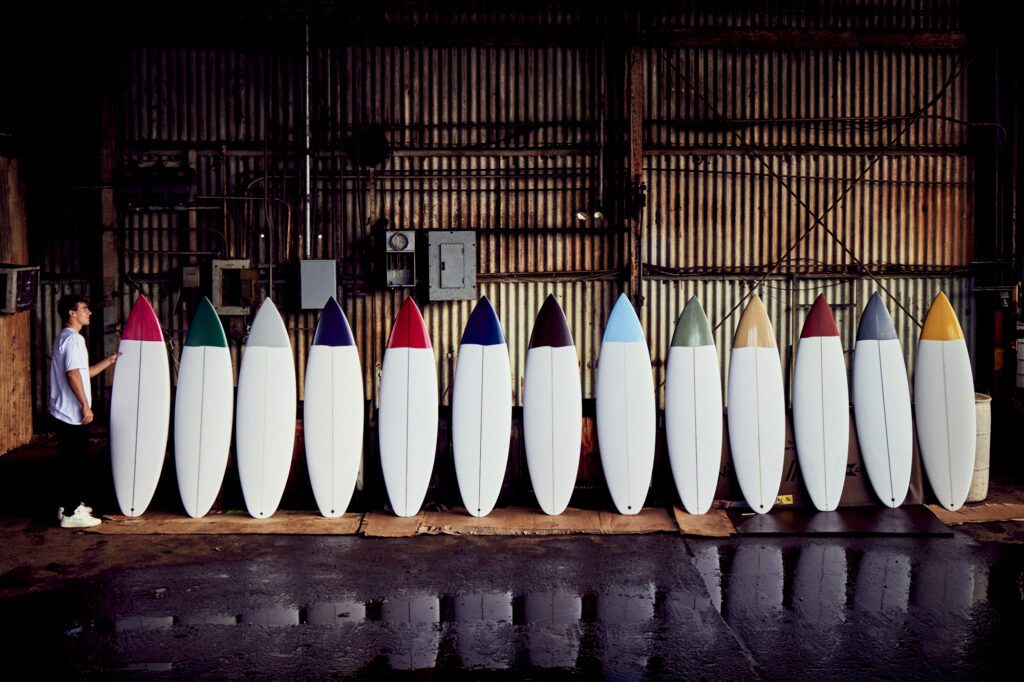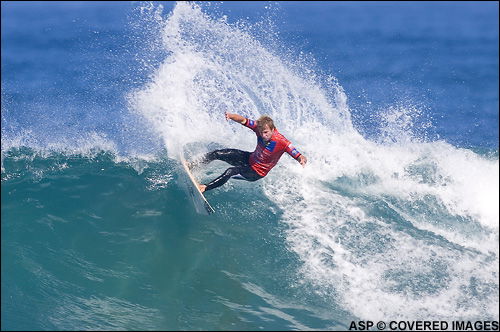Why’d Kolohe Glue Metal Plates To His 6’4?
An old trick from the Taj Burrow playbook.
Yesterday in the Margaret River Pro, Kolohe Andino did something you rarely see in surfing — he added metal plates to the external frame of his board to make it heavier.
Typically, ‘step-ups’ (like Kolohe’s 6’4 Lost) are glassed with heavier fiberglass than high-performance shortboards. This is to make the boards stronger, and thus less susceptible to breaking, as they are designed to be surfed in larger/more powerful surf. It also helps with mitigating chops and chatter to increase drive and control.
A standard HP shorty uses two sheets of 4-ounce fiberglass on top and a single sheet of 4-ounce fiberglass on the bottom. The top deck receives extra fiberglass to mitigate pressure dings from the surfer standing on this side of the board.

A typical step-up, at least for the average punter, gets two sheets of 6-ounce fiberglass on top and a single-six on the bottom. But because most pros get boards for free (and thus aren’t afraid to break them), they often get their step-ups glassed with just 4-ounce fiberglass, so that the boards are as light and responsive as possible.
A light board may be preferred in clean conditions, but on a large, mostly fat, windswept face like Margie’s Main Break, a lack of weight can lead to a “chattery-ness” in one’s surfing that appears wobbly and weak. Judges hate to see it.
So with a huge swell expected for his Round 3 heat, Kolohe took his finely-tuned 6’4 and did something unthinkable, if highly imaginative. Brother went to a local hardware store, bought two quarter-pound metal plates, and applied them to the deck of his board using glue and wax as an adhesive. A typical surfboard weighs between 5-7 pounds, so half a pound is not a major addition, but it would be noticeable.
Putting weights in a surfboard is not a new concept. Tow guys do it all the time, to make their boards more capable of absorbing chops and less affected by the elements. However putting weights on a surfboard is not something many people have seen before. So where did an idea like this even come from?
We’ll let Kolohe explain.
As Kolohe mentions in the video above, the idea of adding weight to the board came from his dad, who thought that spray-painting the 6’4 would give his son an edge in bigger surf. However, after speaking with many-time Tour winner and WA staple Taj Burrow, Brother got the idea of adding actual weights to the deck of his board, as Firewire founder Nev Hyman had done for Burrow back in the 2007 Bells event. Taj won that comp over Andy Irons with a nine in the dying minutes.
“It feels unreal just to ring that thing finally,” Burrow said after winning his first Rip Curl Pro Bells on a crudely-weighted Firewire. “Having rung the little one, the big one’s a lot louder.”

So, did Brother’s Frankenstein creation work?
He seems to think so, and the scoreboard tells a similar story. Using the weighted 6’4, Kolohe smashed his competitor at Main Break — 14.57 to 9.00 — locking in two seven-point rides to a secure a Round 3 victory over Australian Jackson Baker.
Out of 16 heats, Kolohe ended up with the sixth-highest heat total of the day, for surfing like this.
On Finals Day (today), the waves will be smaller and cleaner, so it will be interesting to see if Kolohe keeps the plates on, removes them, or surfs a different board altogether.
Assuming he used Superglue, option 2 might not be off the table.














Comments
Comments are a Stab Premium feature. Gotta join to talk shop.
Already a member? Sign In
Want to join? Sign Up